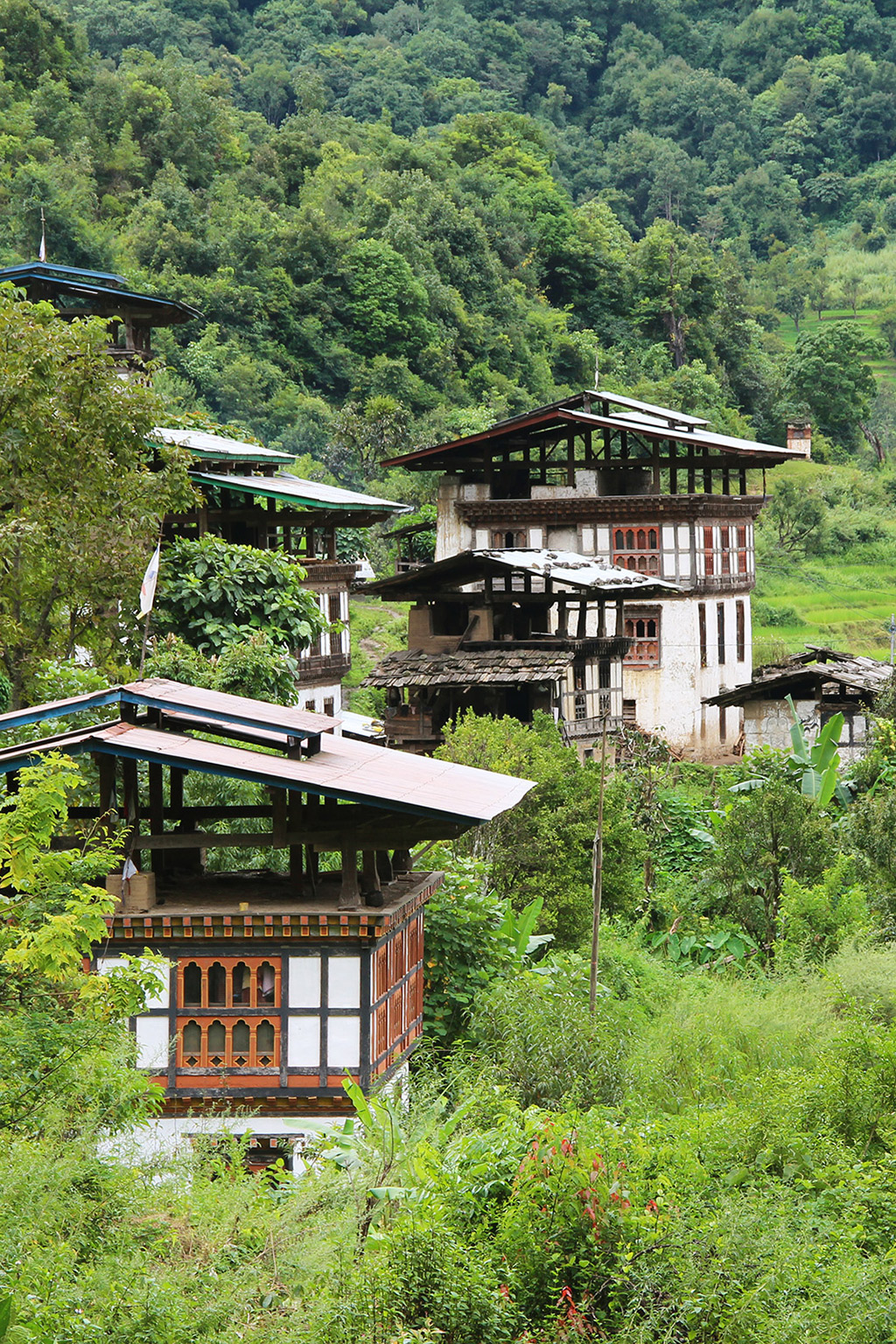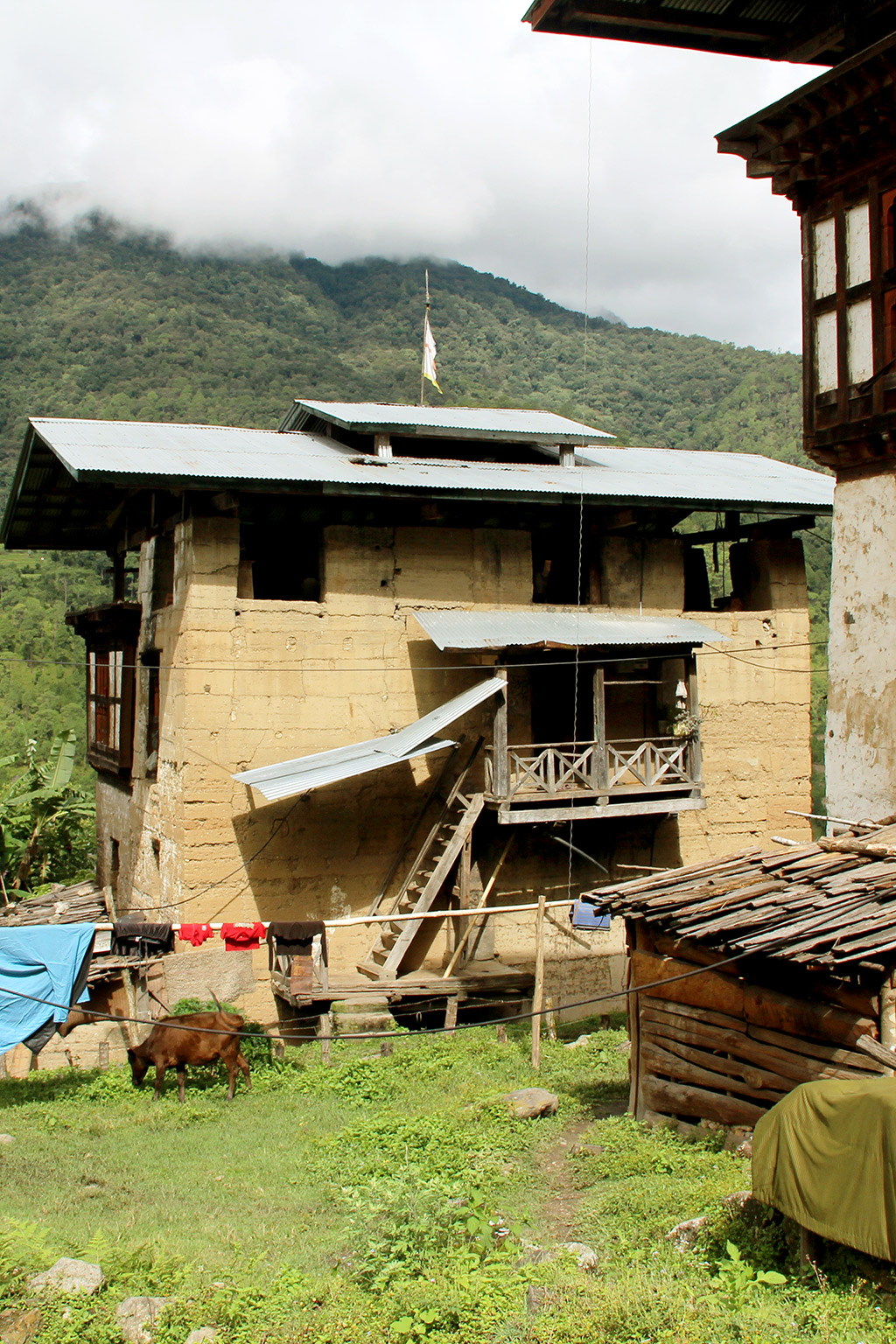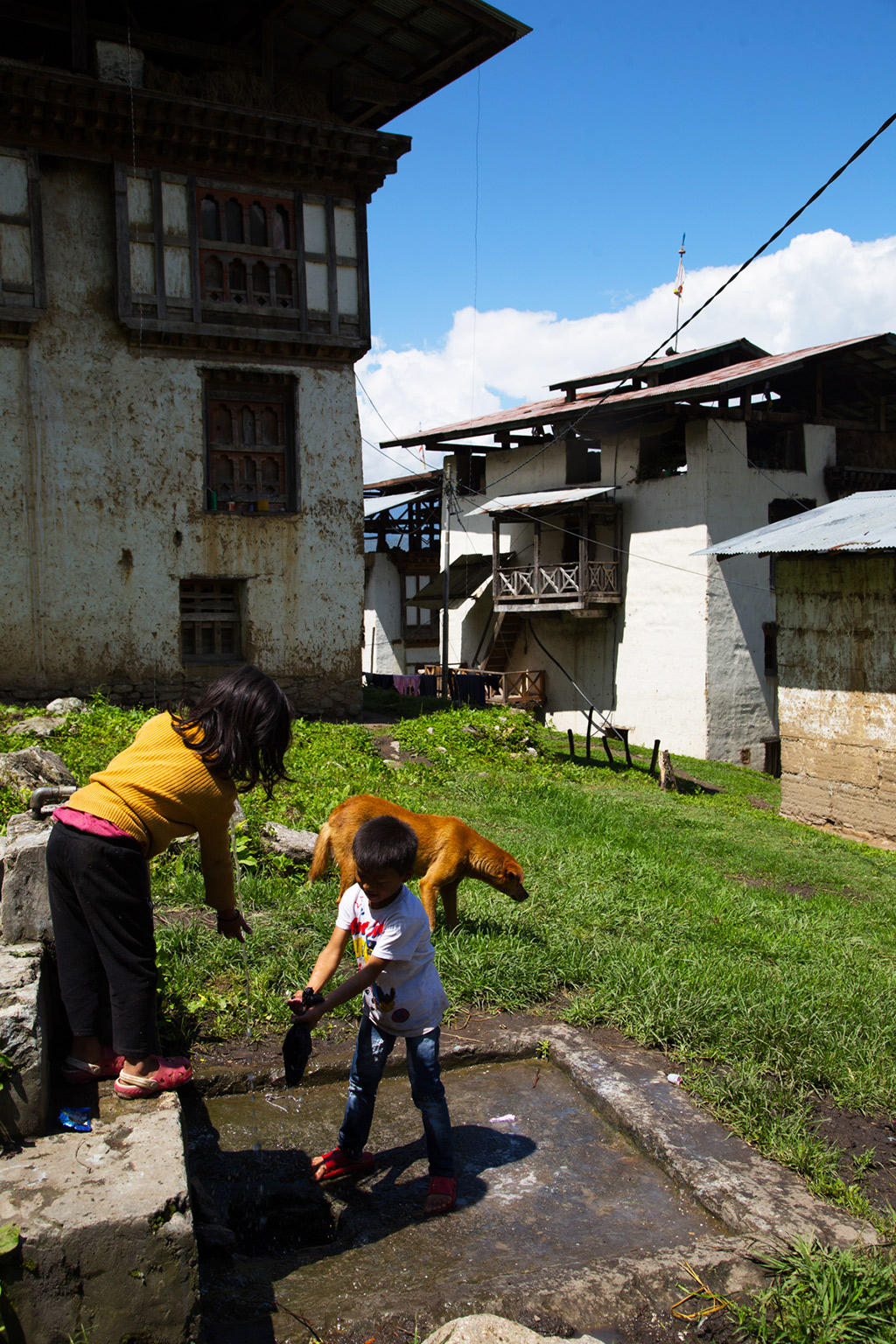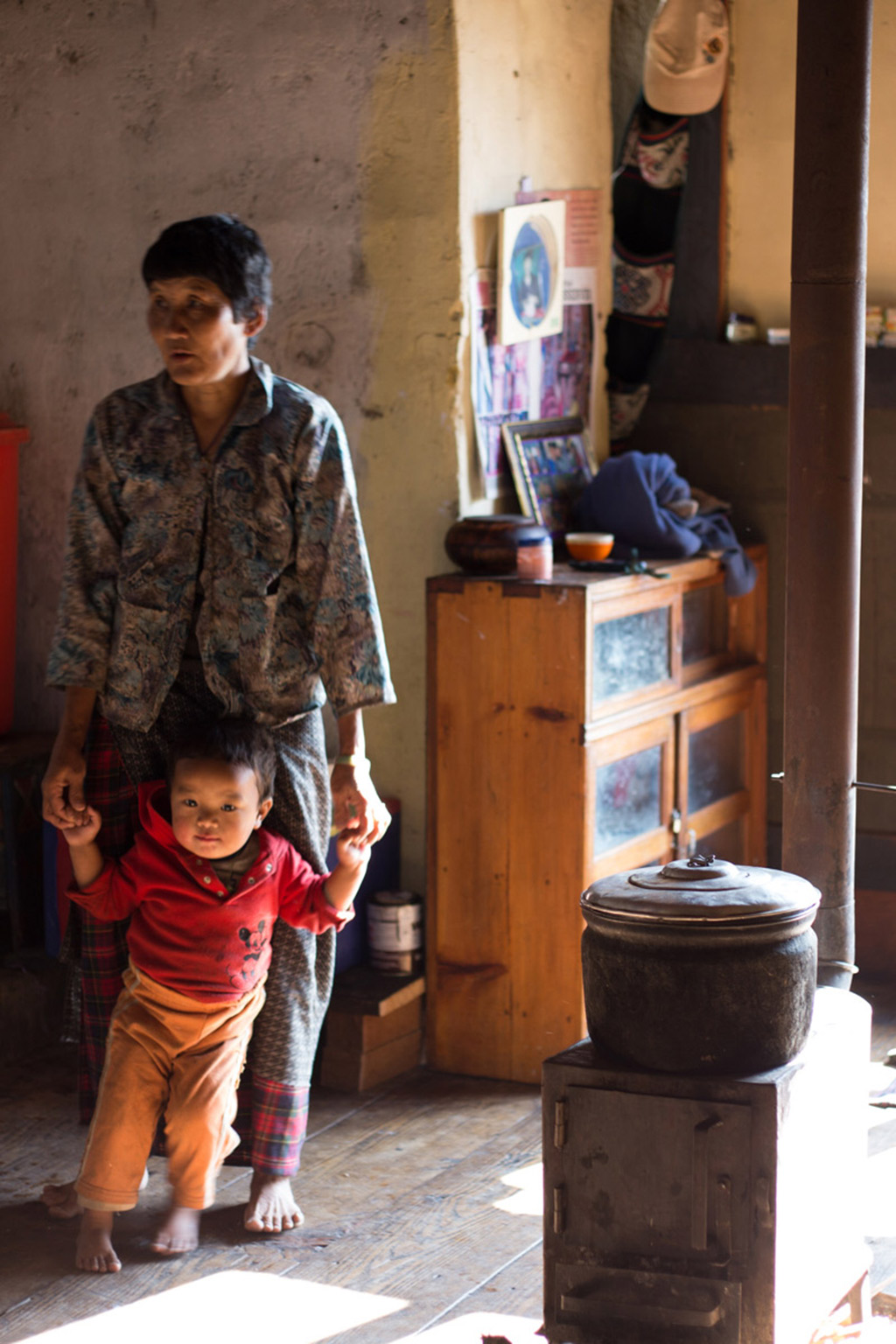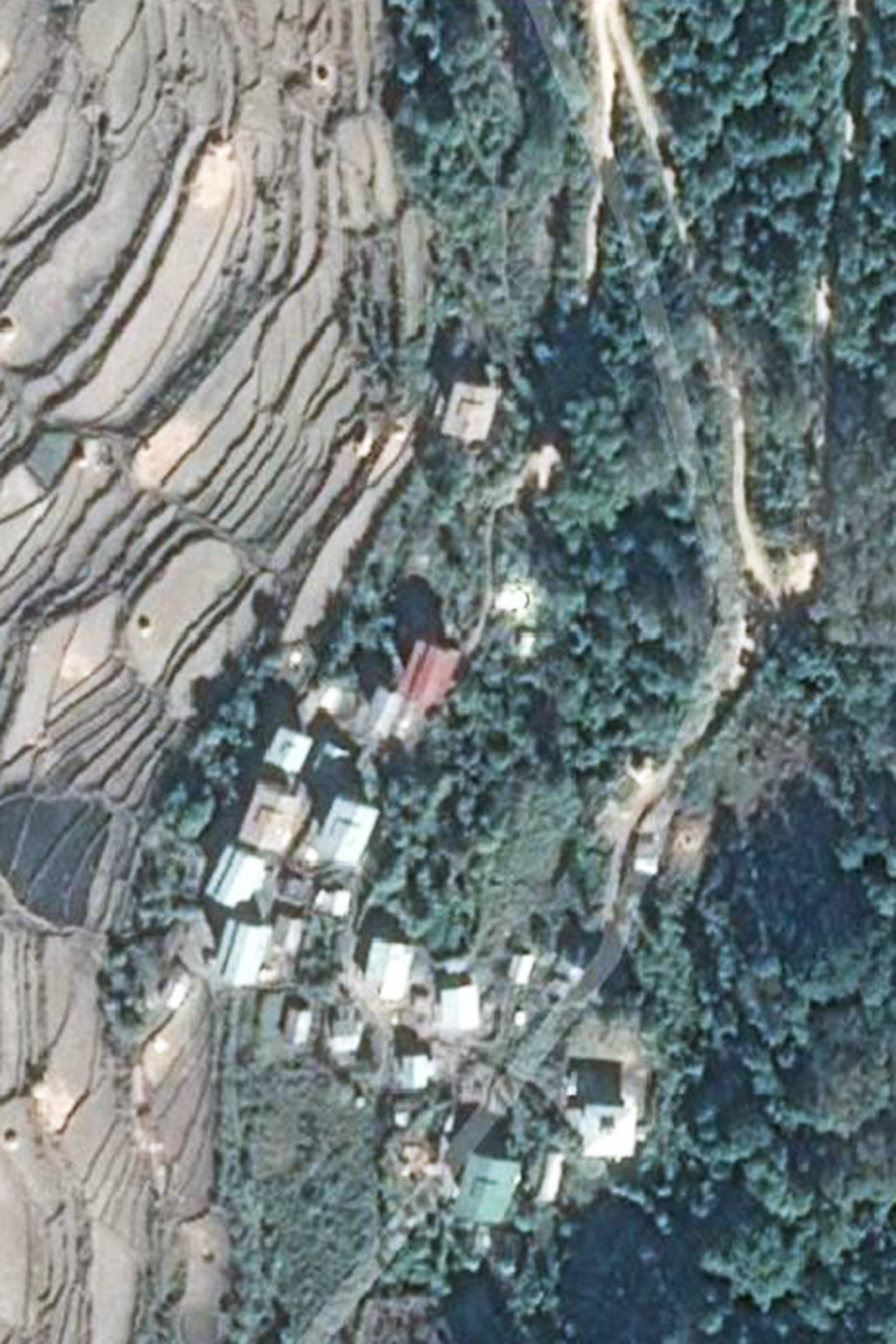Three Villages in the Mountains
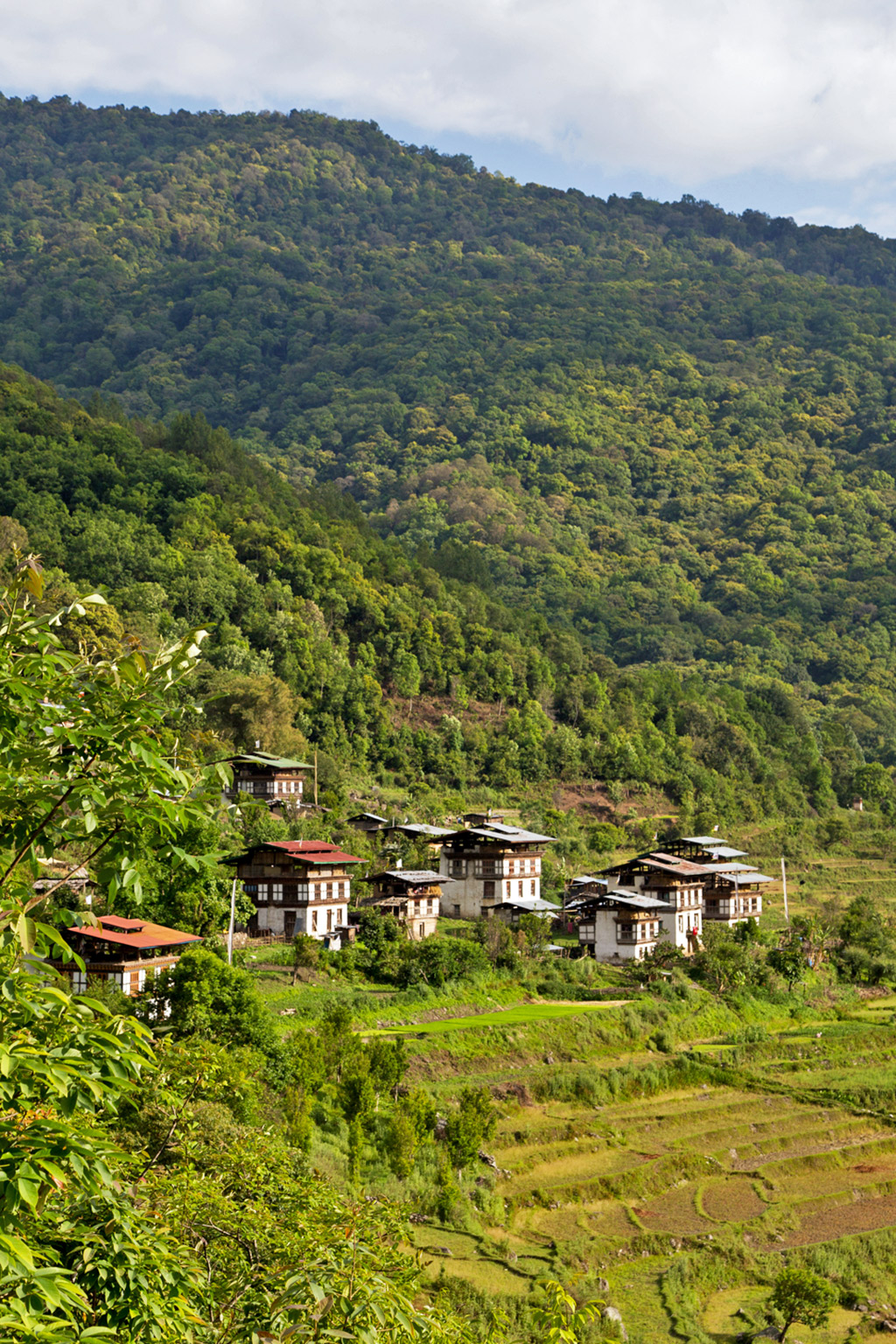
The villages of Thangbji, Pangsho and Tamigdamchhu lie nestled in clearings in the forest above the Puna Tsang Chu river. The cluster of homes that comprise the village of Thangbji is perched overlooking the fields, like a group of people dressed in their holiday best, jostling for a view of the crops below and the mountains beyond. Thangbji is tiny, with fifteen homes and a temple making up the entirety of its built structures. Pangsho and Tamigdamchhu are a little further away, and have between six and ten homes each, spread out with fields in between.
The village is laid out according to the topography, with the most important home at the top of the hill. A few houses are located further away and separate from the others, and were once occupied by slaves. The buildings have a lower, heavier level built in stone and mud, with the lighter upper story in ekraEkra is a kind of a wattle and daub walling system which is traditionally built with mud plaster over a bamboo mat inserted between timber frames – also known as Shamig in Bhutan. The Timber frames in this technique are known as Shoma. https://youtu.be/hgt9dcEUr9s work with elaborately detailed rabselsRABSEL The Rabsel element in traditional Bhutanese architecture is one of the most significant and beautiful. It mainly consists of timber frame structure with multiple windows and panels that cantilevers from the wall. “Rab” in Dzongkha means “good” and “sel” means “clarity” and the Rabsel was thus named because it provides light and clarity into a building through its multiple… and cornices that crown the home. Together they manifest the language of stone, earth and timber seen in every village in Bhutan. The ornate face of each house is oriented towards the field where the families work, and the homes are accessed from the ‘rear’ of this face.
The steep terrain and the combinations of access and presentation make for a fascinating thoroughfare. The path, in undulating levels and steps, curves around a chortenChorten or Stupa is an important religious monument in Buddhism, symbolizing Buddha’s presence. It also holds precious Buddhist relics and sometimes even preserved bodies of renowned lamas. Read more about Chortens on Tibetpedia Read more about Chortens in Bhutan in this article in the Bhutanese Daily BBS. built to the memory of a loved one, pauses at water pipes, and offers glimpses of the curious faces of children as they peep out of windows at the world outside. The intricate woodwork at every turn punctuates the solidity of stone and mud; ladders and staircases crafted from single logs are a common sight, as are the entrance balconies which cantilever out of building forms.
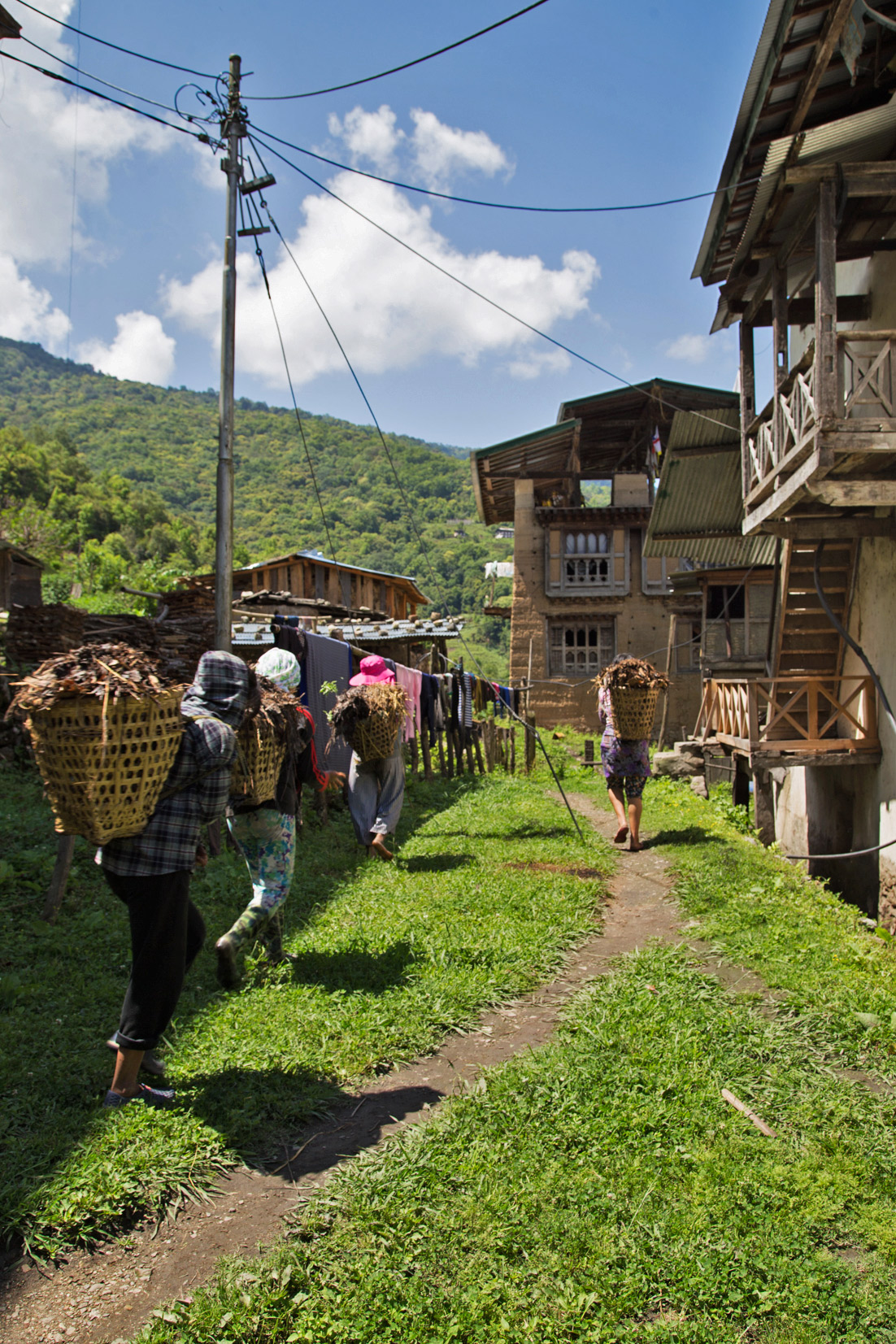
Later, we walk to Pangsho through the old mule path which winds through dense glens and hidden valleys. We pass groups of women working in the fields, woven baskets on their backs. Some women are drying the previous year’s rice crop on crude wooden decks, busy amidst their playing children. A group of people, men and women, are on a break from their morning work, sharing their favourite domaLike elsewhere in South Asia, chewing doma pani (བདོག་མ་པ་ནི་) is popular throughout Bhutan. Also referred to simply as doma (བདོག་མ་), the collation consists of a quarter or more of the areca nut (Areca catechu; doma), betel leaves (pani or paan) as it is known in South Asia, and a dab of slaked lime (tsuni, derived from chunain Hindi). https://texts.shanti.virginia.edu/book_pubreader/40706…. The men have taken a break from cutting and carrying firewood from the forest, the women from their field work. One of the women is going mushroom picking. This mid morning camaraderie is a moment of brief respite in a hard day’s work.
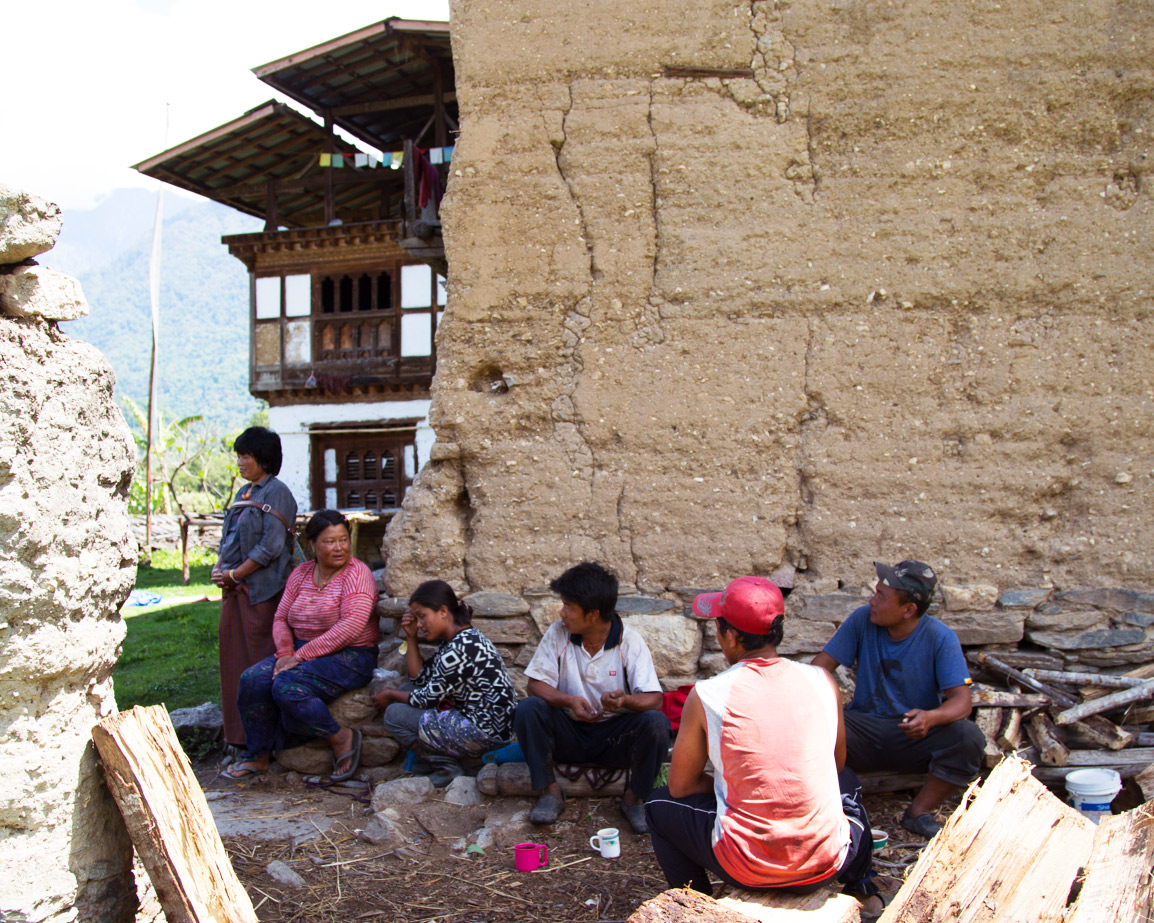
Life in these villages is primarily supported through subsistence agriculture and an intimate relationship with the surrounding forests. At an altitude of 1400m, the weather here is comfortable, with cool winters and warm summers. The terraced fields produce buckwheat, rice, wheat and barley. Most families have cows and grow vegetables. The forest provides mushrooms, berries, timber, wild betel nuts and an array of other edible and usable resources. Freshwater streams and springs offer abundant water sources. Change has been slow to make its way to these parts. Until a couple of decades ago, these villages were accessed only by foot or horse – electricity made its way to the homes before roads did.
Changes in how land and resources are presently managed trigger conversations around ownership and stewardship of land. The relationship that the villages have had with the forests is now threatened by ideas of utility, profit and development. Licenses may soon be required to harvest anything from the forests, and may be given to people from elsewhere too. How long before the villagers are alienated from their surroundings in the name of progress?
Vignettes
